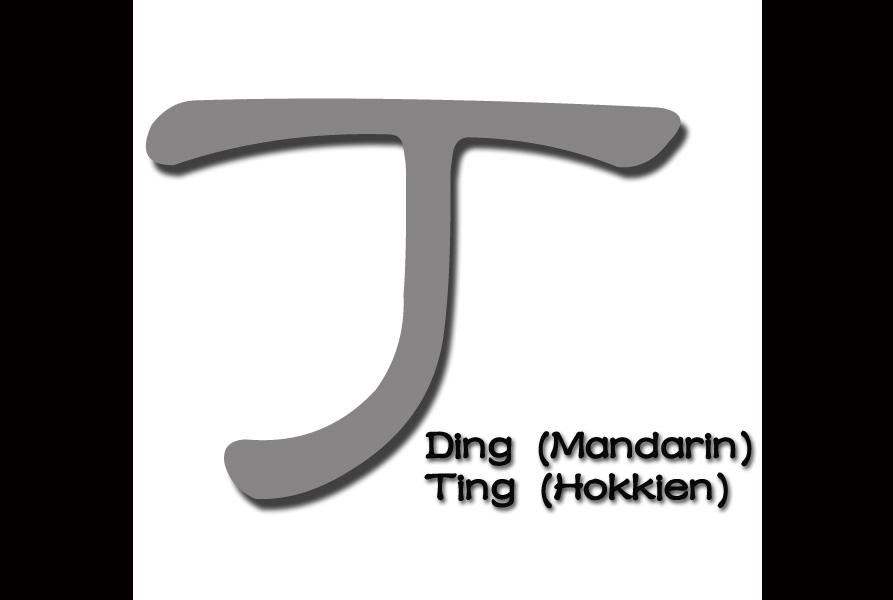First published in Tulay Fortnightly, Chinese-Filipino Digest 24, no. 24 (May 22-June 12, 2012): 5.
Chinese surname 丁 (Ting in Hokkien, Ding in Mandarin) ranks 28th among Chinese in the Philippines and 48th in China.
The Chinese character 丁 is quite simple: the capital letter T with a hook at the bottom of the vertical stroke. I still remember during my second year high school at Philippine Chinese High School, the first day of our Chemistry class, teacher said she is heir of Chinese with surname Ting and wrote 丁on the blackboard.
Surname 丁 originated from a famous minister of the first emperor of Zhou Dynasty, Zhou Wu Wang (周武王) who reigned in 1066-1063 BC. The minister was Lu Shang (呂尚), better known as Jiang Zi Ya (姜子牙). So the original surname of 丁 is actually Lü (呂).
Lü Shang was conferred at State Qi (齊). His son Lü Ji (呂伋) succeeded him as the second king of Qi after he passed away. Lü Ji was also the important attending minister of the second and third Zhou emperors. When he passed away, he was given the name 丁公 (Ding Gong), revered Ding. One branch of his heirs used 丁 as their surname, thus 丁 became a surname in China.
Among the Tings in the Philippines, a certain Tingco is a historical figure worth mentioning here. We do not really know his Chinese name, but we are certain of his Chinese surname 丁. Let me just quote from Milagros C. Guerrero’s article, “The Chinese in the Philippines, 1570-1770,” in The Chinese in the Philippines, vol. 1 (Alfonso Felix Jr., 1966):
“In 1686, another serious China uprising broke out. The year before, criminal Chinese elements had gained entrance into the Philippines, many of whom were fugitives from Chinese law. Under the leadership of a certain Tingco, they plotted to overpower the Spanish forces in Manila, loot the church and stores, as well as the residences and convents. In August 1686, Tingco and his followers began the hostilities in the Parian by killing two Spaniards and looting the house of the alcalde-mayor of the Parian. The timely arrival of government troops resulted in the defeat of Tingco and his men. Tingco was caught and put to death while his followers, who escaped to Pasay, were massacred by a combined Filipino-Spanish detachment.”
By the way, the surname of the only Chinese sculptor-artist in the Philippines we know is Ting Ping Lay (丁平來). He won an award from the Art Association of the Philippines in the 1950s. One of his best known sculptures is the New Moon. He is also a writer in Chinese, using a beautiful byline 丁香 (Ting Hiong in Hokkien). 丁香 is Chinese for clove, 香 for fragrance.
